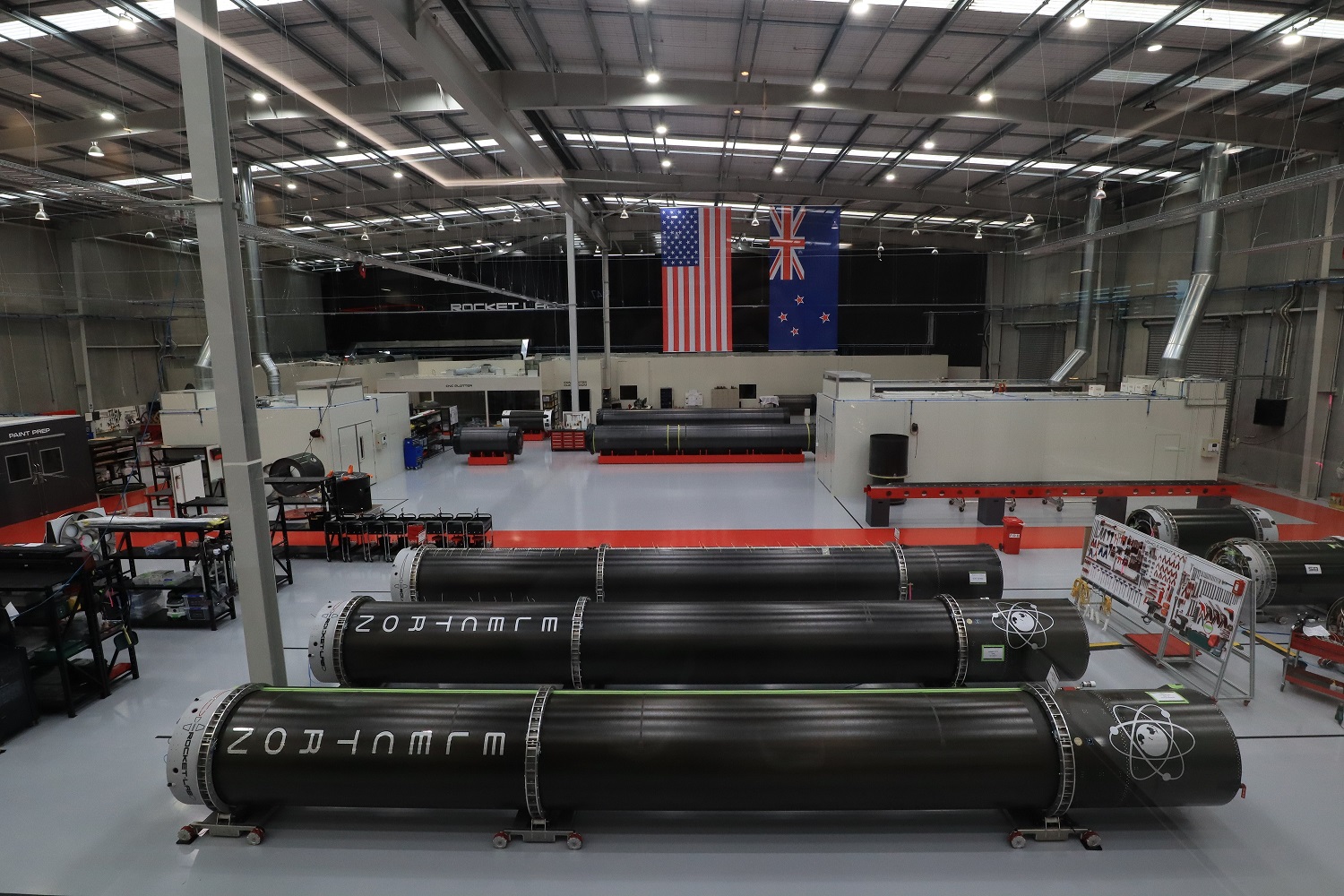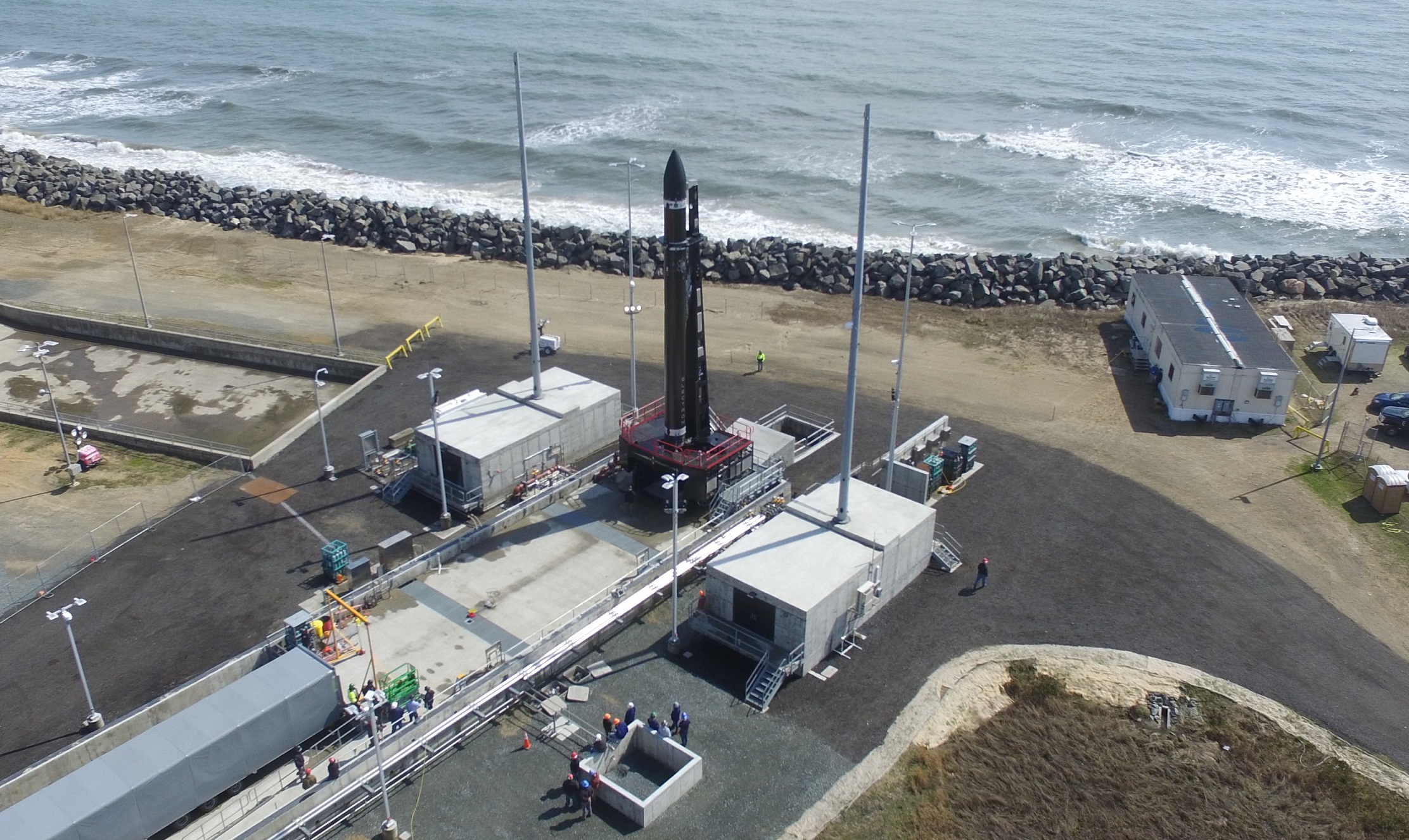California-based aerospace company Rocket Lab’s Electron Rocket has been raised onto its launchpad ahead of the company’s upcoming mission with the U.S. Space Force.
The rocket, powered by its 3D printed Rutherford engines, has passed initial system testing and was rolled out to Launch Complex 2, at the Mid-Atlantic Regional Spaceport in Wallops, Virginia last week.
In the mission scheduled for Q3 2020 and coordinated by the U.S. Space Force, Rocket Lab will launch a microsatellite from the U.S. Air Force research laboratory’s Monolith program into space. The aim of the mission is to determine the ability of small satellites to support large aperture payloads and to monitor space weather.
“We’re proud to be partnering with the U.S. Space Force for the first mission from Launch Complex 2 and we’re honored to be working with them again following previous STP missions out of Launch Complex 1,” said Peter Beck, Rocket Lab founder, and Chief Executive.

Rocket Lab’s Electron Launch Vehicle
Founded in 2006, Rocket Lab’s ongoing mission has been to provide its commercial customers with rapid and repeatable launches of small orbital satellites. Having successfully launched its rocket named Ātea in 2009, the company introduced the Electron, a two-stage launch vehicle as its successor.
The company first launched its Electron rocket in May 2017. After successfully taking off from its base in New Zealand, the small launch vehicle named ‘It’s a test’, fell just short of orbit. If successful, the latest mission will represent the 49th time that Rocket Lab has launched a small satellite into space.
The Electron Rocket’s nine engines are powered by 3D printed liquid propellants, which are produced using electron beam melting (EBM) technology, and capable of reaching a thrust of 120N. Constructed using carbon composites, it can carry up to 225 kilos of payload, which makes it ideal for transporting small satellites.
Rocket lab received a further $140 million of funding in November 2018 in order to continue the engine’s development, taking the company’s valuation to over $1 billion. The company has since celebrated the 100th 3D print of its Rutherford rocket engine, and it’s considered to be a cornerstone in the company’s pursuit of private space exploration.
All systems are go for the 3D printer powered rocket
A team of Rocket Lab engineers and technicians have successfully carried out a series of integrated system checks to verify the rocket’s launch systems, in addition to ground system checks at the launch site.
The tests included raising the rocket onto the launchpad, activating and tuning its pad fluid systems, power and communication checkouts, RF testing, and a hot ignition test of the Electron Rocket’s 3D printed engines.
In one of the final phases before lift off, NASA will need to certify Rocket Lab’s Autonomous Flight Termination System (AFTS). The fully automated GPS system is designed to terminate any off-nominal flights. This increases launch frequency and provides greater schedule control by reducing its reliance on ground-assets and human flight termination operators. The system has already flown on several missions from Rocket Lab’s Launch Complex 1 in New Zealand, and NASA expects to certify the technology before the rocket’s Q3 2020 launch window.
With Launch Complex 2 now complete and ready for operations, the next stage for the U.S Space Force’s satellite launch mission, is to finish construction of the nearby Rocket Lab Integration and Control Facility. This will house a launch control center, payload integration facilities, offices, and a pre-launch integration area for multiple Electron vehicles.

Additive manufacturing and rockets
Additive manufacturing is finding widespread applications in R&D efforts across the aerospace industry, due to its ability to produce complex parts in a cost-effective way.
The European Space Agency (ESA) for instance has completed the first hot-fire testing of a full scale, 3D printed rocket engine named BERTA (Biergoler Raumt transporta engine/Biergoler space transport drive). Developed by ArianeGroup at ESA, the engine was produced using selective laser melting (SLM), from a nickel-based alloy (for the injection head) and stainless steel (the combustion chamber).
Florida-based space company Rocket Crafters Inc (RCI) was granted a $542,600 research contract by the Defense Advanced Research Projects Agency (DARPA) in July 2017, to develop its hybrid 3D printed rocket engine. Using their proprietary Direct-Digital Advanced Rocket Technology (D-DART), the Rocket Crafters aimed to combine the benefits of both 3D printed solid rocket fuel grains and liquid propellants, to create an engine capable of 5,000 lbs of peak thrust.
German metal 3D printer manufacturer SLM Solutions produced the “world’s largest rocket engine,” in February last year. Built on behalf of the British spaceflight company Orbex, the engine was 3D printed in a single piece, and will be used to deliver small satellites into orbit.
You can now nominate for the 2020 3D Printing Industry Awards. Cast your vote to help decide this year’s winners.
To stay up to date with the latest 3D printing news, don’t forget to subscribe to the 3D Printing Industry newsletter or follow us on Twitter or liking our page on Facebook.
Looking for a job in the additive manufacturing industry? Visit 3D Printing Jobs for a selection of roles in the industry.
Featured image shows the Electron rocket on its launchpad during testing. Photo via Rocket Lab.



